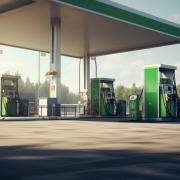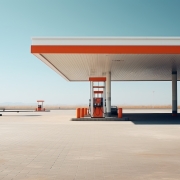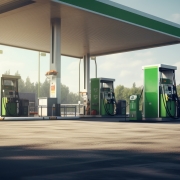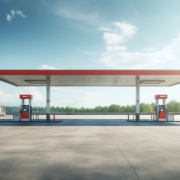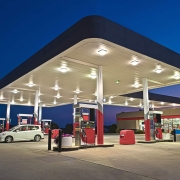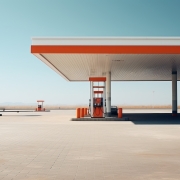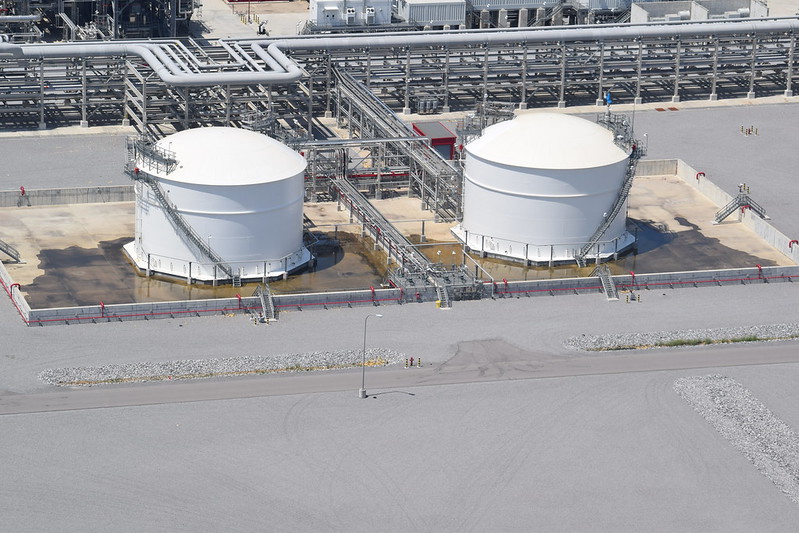Seizing the CNG Opportunity in Tanzania’s Evolving Fuel Market
As the compressed natural gas (CNG) market in Tanzania continues to expand, petrol station owners must carefully consider the potential benefits of incorporating this cleaner and more cost-effective fuel into their business model.
By planning ahead and proactively addressing the key considerations, savvy entrepreneurs can position their stations to capture a larger share of the growing CNG demand, ultimately boosting their long-term revenue and profitability.
One of the first and most crucial steps is to assess the availability of the necessary CNG infrastructure in the local area.
Checking the presence of a gas pipeline network that can reliably deliver CNG supplies to the station is essential, as the lack of such infrastructure may force reliance on more expensive truck deliveries.
Establishing strong relationships with reputable CNG suppliers is also paramount, ensuring a steady and consistent flow of the fuel to meet customer demand.
Additionally, petrol station owners must carefully calculate the upfront costs associated with adding CNG infrastructure, such as the installation of specialized pumps and other necessary equipment.
Accurately budgeting for these expenses will help avoid any unpleasant surprises and allow for effective financial planning. By proactively addressing these market feasibility considerations, station owners can make informed decisions about incorporating CNG into their business strategy.
The Rise of CNG in Tanzania.
As the number of vehicles running on Compressed Natural Gas (CNG) continues to grow in Tanzania, this fuel alternative is becoming increasingly cost-effective compared to traditional options like petrol and diesel.
The government’s support and the inherent advantages of CNG, such as its cleaner emissions and lower operating costs, have contributed to this rising trend.
For fuel businesses in the region, considering the incorporation of CNG into their existing petrol stations could provide a significant competitive edge and position them for long-term success in the evolving energy landscape.
Benefits of Adding CNG to Your Petrol Station
Incorporating Compressed Natural Gas (CNG) into your existing petrol station operations can provide a significant competitive edge in the market.
By being proactive and planning ahead, you can position your business to capitalize on the growing demand for this cleaner and more cost-effective fuel alternative.
Offering CNG at your station can boost your revenue and profitability in the long run, as more and more Tanzanian drivers opt for this eco-friendly and budget-friendly fuel option.
With a thorough understanding of the gas pipeline network, reliable supplier relationships, and the necessary infrastructure costs, you can make a strategic decision to add CNG to your service offerings, giving you a head start over your competitors and ensuring your petrol station remains a preferred destination for savvy consumers seeking sustainable and affordable fuel choices.
Key Considerations for Planning Ahead.
Availability of the gas pipeline network is a crucial factor to consider when adding CNG to your petrol station. Without a reliable and accessible pipeline infrastructure, you may have to rely on more expensive truck deliveries to supply your station, which could significantly impact your profit margins.
Establishing strong relationships with CNG suppliers is also essential to ensure a consistent and steady flow of the fuel to meet customer demand. Additionally, thoroughly understanding the upfront infrastructure costs, such as the installation of CNG pumps and other necessary equipment, will help you budget effectively and avoid any financial surprises down the line.
By carefully addressing these key market feasibility considerations, you can make informed decisions and position your petrol station for growth in the evolving CNG market.
Assessing Gas Pipeline Network.
Conducting a thorough assessment of the existing gas pipeline infrastructure in the area is the first crucial step.
If a reliable pipeline network is already in place, it will significantly simplify the process of sourcing and transporting CNG to your petrol station. However, if the region lacks such infrastructure, you’ll need to explore alternative options, such as relying on truck deliveries to bring in the necessary CNG supplies.
Carefully evaluating the availability and accessibility of pipeline networks in your trading location will help you determine the most viable and cost-effective approach for incorporating CNG into your business.
Identifying Reliable CNG Suppliers.
Establishing reliable supplier relationships is a crucial step in adding CNG to your petrol station. Begin by thoroughly researching potential CNG suppliers in your region, evaluating their track record, delivery capabilities, and pricing structures.
Building long-term supply agreements with trusted partners will ensure a steady and consistent flow of CNG to meet the growing demand at your station. Take the time to vet suppliers and negotiate favorable terms that align with your business goals and budget.
By securing dependable CNG sources, you can confidently invest in the necessary infrastructure and capitalize on the emerging CNG market in Tanzania.
Calculating Infrastructure Costs.
Estimating the expenses for installing a CNG pump at your petrol station is a crucial step in planning for the CNG opportunity. This includes not just the cost of the pump itself, but also the necessary equipment and infrastructure upgrades required to integrate CNG capabilities.
Factors like underground storage tanks, compressors, piping, and electrical work can add up quickly. Additionally, budgeting for ongoing maintenance and servicing of the CNG equipment is essential to ensure reliable and efficient operations.
By carefully calculating these upfront and recurring costs, you can develop a comprehensive understanding of the financial investment needed to bring CNG to your petrol station. This will help you assess the viability of the project and make an informed decision about whether to move forward with adding this alternative fuel to your business offerings.
Making Informed Decisions: Weighing the Costs and Benefits of Adding CNG.
Analyzing the market feasibility and demand for CNG in your region is a crucial first step. Carefully examine the gas pipeline network in your area and assess whether there is sufficient infrastructure in place to reliably deliver CNG to your petrol station.
If the pipeline network is lacking, you may have to rely on more expensive truck deliveries, which could significantly impact your profit margins.
Next, identify reputable CNG suppliers and establish solid relationships with them. Securing a steady and consistent supply of CNG will be essential for meeting the demands of your customers.
Equally important is understanding the infrastructure costs associated with incorporating CNG at your station, including the installation of specialized pumps and other necessary equipment.
Accurately forecasting these expenses will help you budget effectively and avoid any financial surprises down the line.
By thoroughly addressing these key considerations, you can make an informed decision about whether adding CNG to your business model is a viable and profitable strategy.
Carefully weighing the costs and benefits will ensure that you are well-prepared to capitalize on the growing demand for cleaner and more affordable fuel alternatives in the marketplace.
Positioning for Growth and Success.
Staying ahead of the competition and catering to the growing demand for cleaner fuel alternatives are key priorities for petrol station owners in Tanzania.
By proactively incorporating Compressed Natural Gas (CNG) into their business model, forward-thinking operators can position themselves for long-term growth and success.
Establishing reliable supplier relationships and investing in the necessary CNG infrastructure upfront will be crucial, as it will allow them to efficiently meet the rising consumer demand for this more affordable and environmentally-friendly fuel option.
Taking these strategic steps now can give petrol stations a significant competitive edge, enabling them to capture a larger market share before their rivals even begin to explore the CNG opportunity.
With careful planning and a commitment to staying ahead of industry trends, embracing CNG can be a smart move that sets savvy fuel retailers up for sustained profitability in the years to come.
Embracing CNG for Long-Term Viability.
Ensuring your business’s long-term profitability in the face of an evolving market landscape is essential for staying ahead of the curve.
By proactively embracing the rise of Compressed Natural Gas (CNG) in Tanzania, you can position your petrol station for growth and success.
This clean and cost-effective fuel alternative is gaining traction, and being one of the first to offer it can give you a distinct competitive advantage.
Through careful planning and strategic decision-making, incorporating CNG into your operations can be a savvy move to secure your business’s long-term viability.
By addressing the key considerations, such as securing a reliable gas pipeline network, establishing supplier relationships, and calculating the necessary infrastructure costs, you can make informed choices that will pay dividends in the years to come.
Adapting to industry shifts and anticipating customer demands are hallmarks of a forward-thinking enterprise, and your willingness to embrace the CNG opportunity can solidify your position as a leader in the local fuel market.

